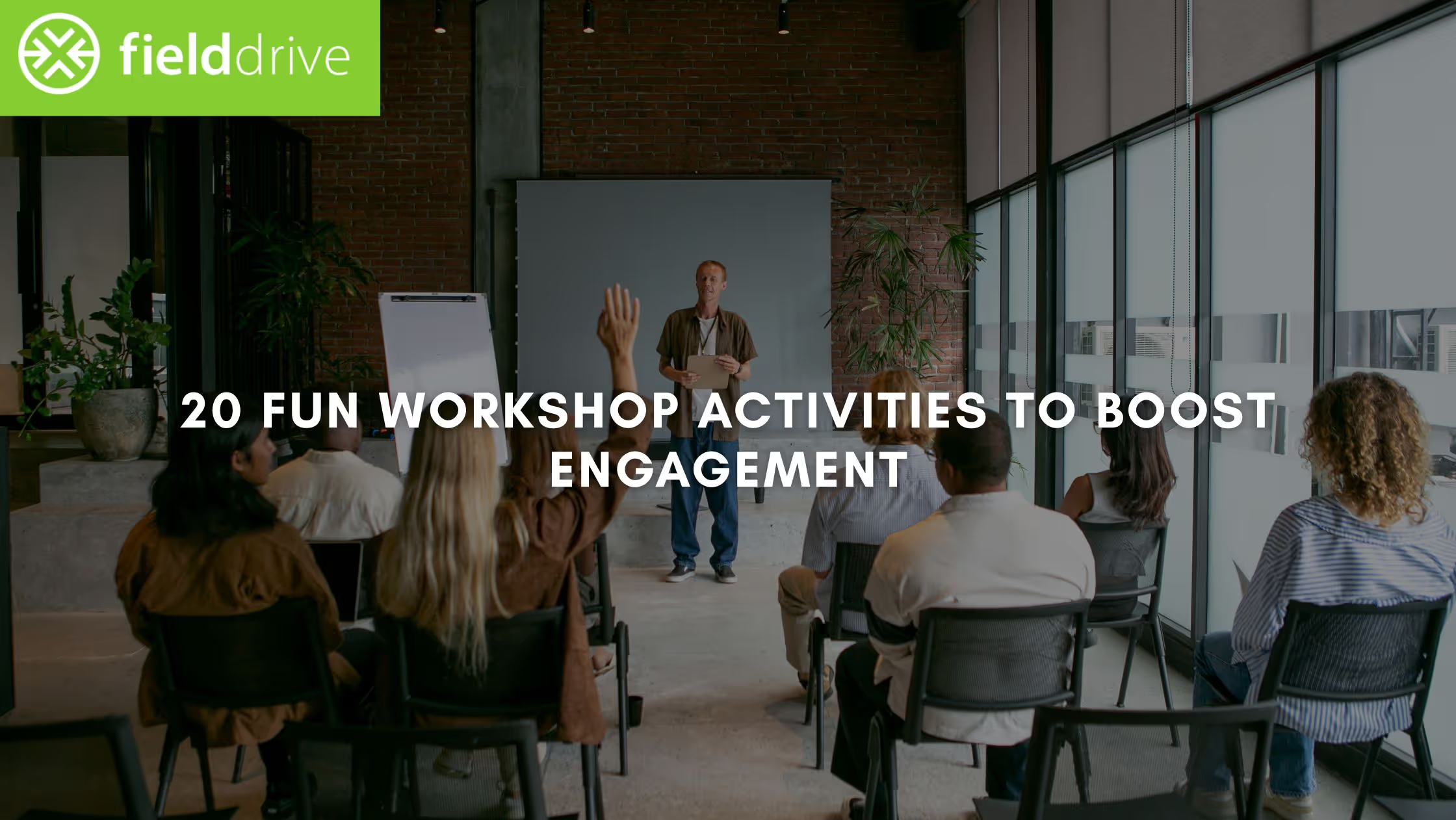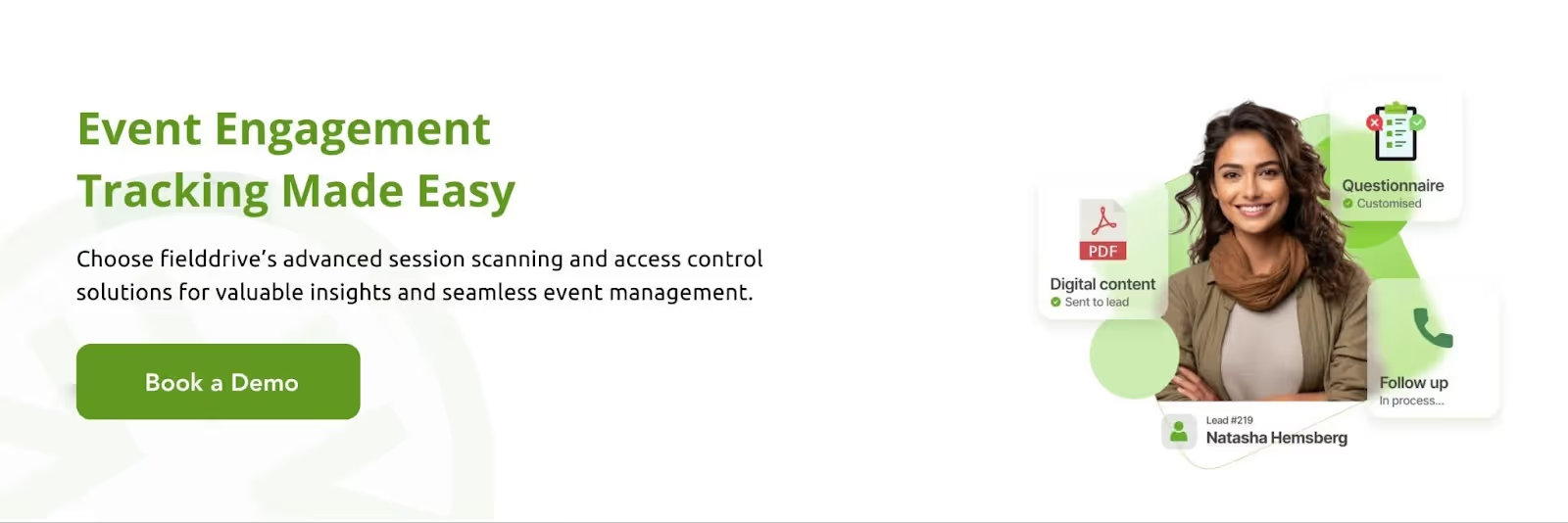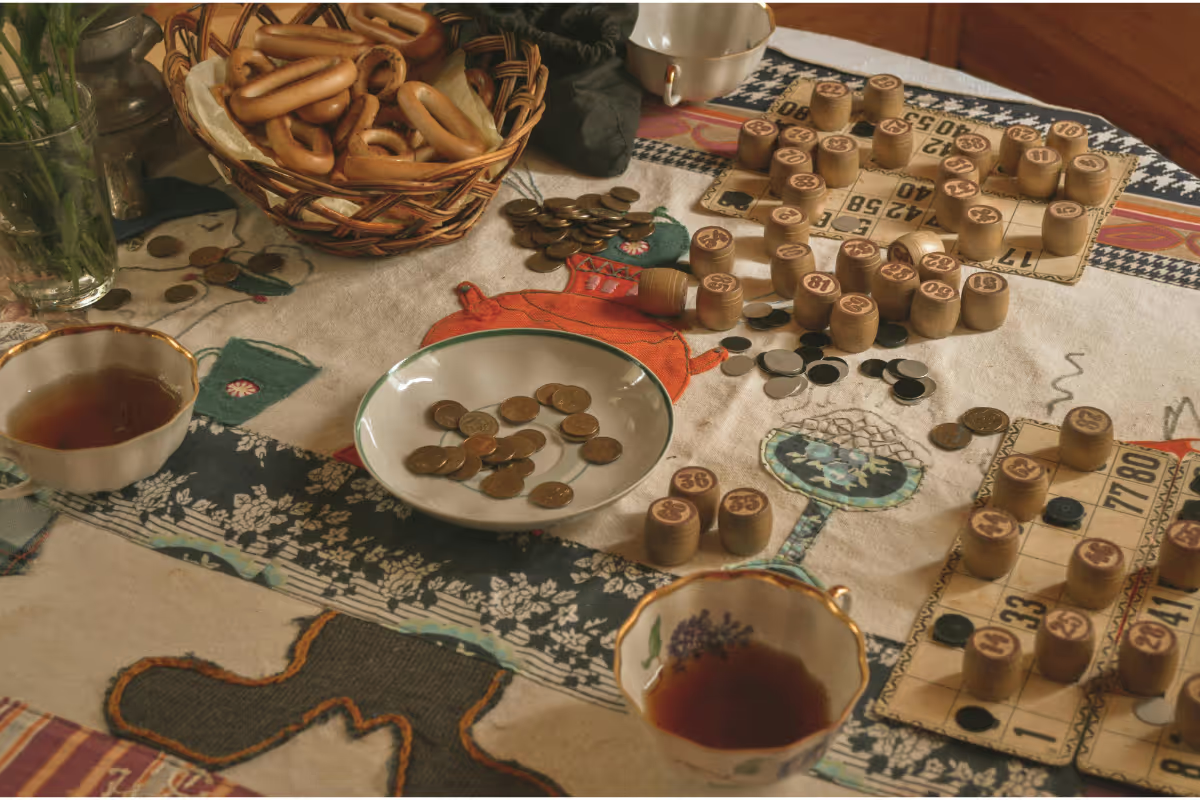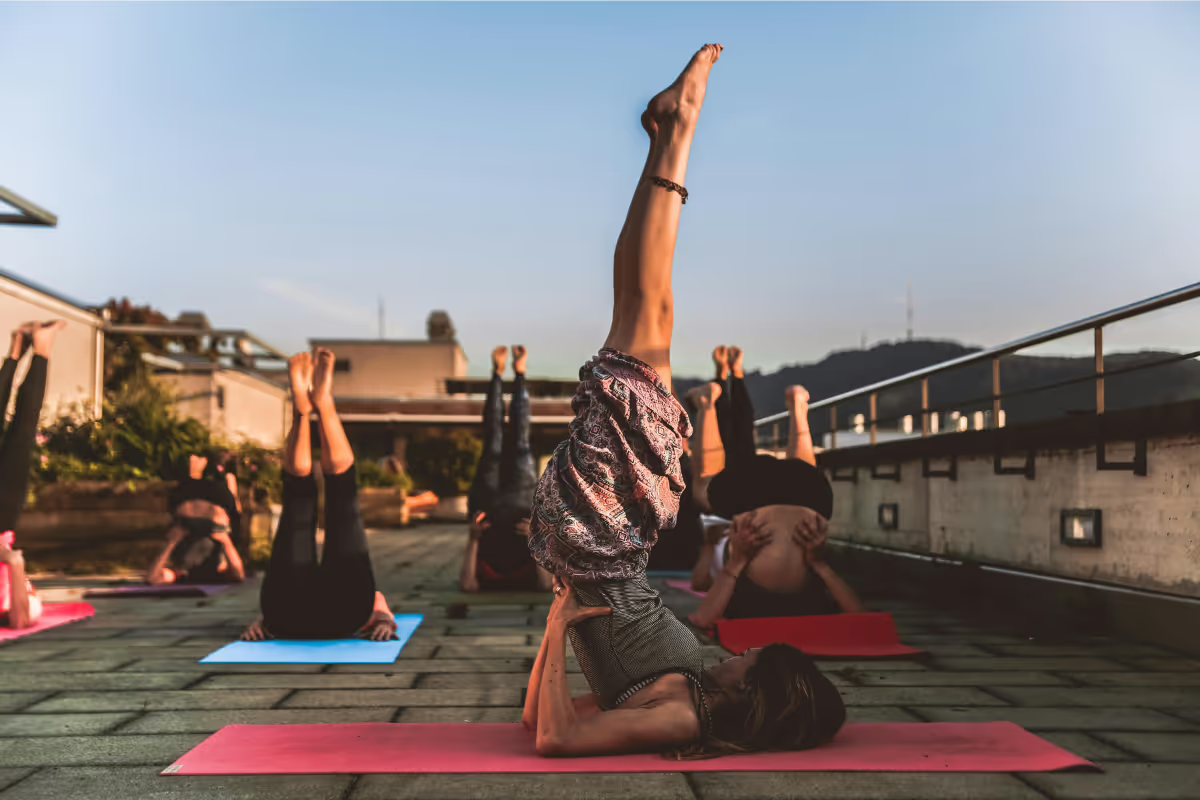20 Fun Workshop Activities and Ideas to Boost Participant Engagement
Explore 20 fun workshop activities to boost participant engagement. Discover creative ideas that will inspire interaction, learning, and lasting impact.

CONTENT
Do you want your workshop to captivate your team and keep them engaged? It's tough when you’ve invested time and effort, only to be met with disengaged participants and a lack of enthusiasm. You want your team to feel energized, motivated, and connected, but instead, the energy feels flat, and the session falls short of expectations.
Here’s the reality: 70% of professionals say workshops have improved their skills. So, why aren’t your workshop activities getting the desired results? The problem often lies in the activities themselves. Without the right activities, even the best intentions can fall short.
But it doesn’t have to be that way. This blog will provide 20 workshop activities to energize your team, spark creativity, and create meaningful connections. Whether you’re looking for icebreakers to start the conversation or deep dives to fuel collaboration, we’ve got ideas for every type of session.
What is a Workshop and Its Benefits?
A workshop is a hands-on, interactive event designed to engage participants in active learning and skill development. Unlike traditional seminars or lectures, workshops focus on collaborative participation, problem-solving, and practical exercises.
These events are often centered around specific goals, whether improving team collaboration, generating new ideas, or developing specialized skills. Workshops are versatile and can be used in various contexts, from corporate settings to educational institutions, and they provide many benefits. Here they are.
Benefits of Workshops:
- Improves Collaboration: Workshops encourage team members to work together, fostering a collaborative environment where ideas flow freely, strengthening team dynamics.
- Enhances Problem-Solving Skills: By engaging in real-time discussions and activities, participants sharpen their ability to tackle challenges creatively and think critically.
- Boosts Engagement: Interactive activities keep participants actively involved, which is far more engaging than passive learning methods like lectures.
- Promotes Skill Development: Workshops focus on hands-on learning, allowing participants to acquire new skills and apply them immediately, which helps reinforce knowledge.
- Fosters Innovation: The collaborative and creative environment of a workshop often leads to fresh ideas and innovative solutions.
- Builds Team Cohesion: Workshops can break down silos, improve communication, and strengthen relationships, ultimately building a stronger, more cohesive team.
- Encourages Personal Growth: Participants often leave workshops with a sense of accomplishment, having gained new knowledge or skills contributing to their professional growth.
Workshops provide a dynamic platform to achieve these benefits, but as mentioned earlier, without the right activities and ideas, the experience can easily fall flat. Let’s dive into 20 engaging activities to breathe life into your next workshop and keep your team fully engaged.

20 Workshop Activities and Ideas to Maximize Team Engagement
Looking for fresh, exciting ways to engage your team during workshops? The right activities can turn a typical tiring session into a dynamic experience that drives collaboration, sparks creativity, and delivers real results. In this section, we’ve curated over 20 workshop ideas that are designed to maximize participation, fuel innovation, and keep your team energized and focused throughout the event. Let’s take a look.
1. Bingo Cards with Custom Content

Bingo Cards with Custom Content is a fun and interactive activity that reinforces workshop content while keeping participants engaged. Tailor the bingo cards to your workshop's themes or key learning points.
- When to use: This activity can be used during the middle or end of the workshop to recap key concepts in a fun and engaging way.
- Outcome: Participants actively recall information while enjoying a competitive game. It reinforces learning and encourages interaction.
- What you need:
- Customized bingo cards with workshop-related content
- A space for participants to play and interact
- Time: 10-15 minutes
Method:
- Create bingo cards with terms, concepts, or facts from the workshop.
- Distribute the cards to participants.
- Call out the items in random order.
- Participants mark off the items on their cards.
- The first person to complete a line or a full card wins.
Tips for Success:
- Keep the game fast-paced to maintain energy.
- Use a digital bingo card generator to save time.
- Offer small prizes to keep participants motivated.
2. Live Polls and Surveys
Live polls and surveys offer instant feedback and keep participants engaged in the moment. Use tools like Zoom or SurveyMonkey.
- When to use: Use this activity during or after key points of your workshop to gather feedback or test understanding.
- Outcome: Immediate insights into participant preferences or understanding. Encourages active involvement and fosters a sense of connection.
- What you need:
- A polling or survey tool (e.g., Zoom, SurveyMonkey, or Mentimeter)
- A way to display poll results in real time
- Time: 5-10 minutes per poll
Method:
- Create simple polls or surveys with questions related to the workshop topic.
- Ask participants to respond in real-time using the tool.
- Share the results instantly with the group to discuss outcomes or insights.
Tips for Success:
- Keep questions clear and concise for easy participation.
- Use polls to break up the session and gauge the group’s understanding.
- Offer a variety of question types (multiple choice, true/false, rating scale).
3. WhatsApp Group for Real-Time Interaction
Create a WhatsApp group for your workshop to foster real-time communication, resource sharing, and participant interaction. It’s a great way to keep the conversation flowing outside the formal sessions.
- When to use: Use it throughout the workshop for live updates, group discussions, or resource sharing.
- Outcome: Enhances communication, encourages real-time collaboration, and allows for quick answers to participants' questions.
- What you need:
- A WhatsApp group or similar messaging platform
- Participants’ phone numbers
- Time: Ongoing throughout the workshop
Method:
- Create a WhatsApp group for the participants and facilitators.
- Share resources, updates, and prompts throughout the session.
- Encourage participants to ask questions or share thoughts during breaks.
Tips for Success:
- Set clear guidelines for the group to keep discussions focused.
- Use the group for quick check-ins or fun engagement during breaks.
- Keep the group active to maintain energy and involvement.
4. Audio Clips for Engagement
Incorporate audio clips into your workshop to emphasize key points, prompt discussions, or add a fun element to the session.
- When to use: Use this activity during breaks or when introducing new topics to refresh the group and spark interest.
- Outcome: Adds variety to the session, reinforces key messages, and engages participants through sensory input.
- What you need:
- Audio clips (podcast excerpts, sound effects, or relevant audio content)
- A device to play the clips
- Time: 5-10 minutes
Method:
- Select audio clips that complement the session content.
- Play the clip at strategic moments, such as at the start of a new topic.
- Ask participants to reflect or discuss based on the audio they’ve just heard.
Tips for Success:
- Choose clips that resonate with the theme of the workshop.
- Keep clips short to maintain attention.
- Use audio to spark creativity or introduce challenges.
5. Google Draw Tool for Collaborative Tasks
Google Draw allows participants to collaborate visually, making it ideal for brainstorming, diagramming, or creative problem-solving.
- When to use: Use this tool during group activities to encourage visual collaboration and creative input.
- Outcome: Promotes teamwork, stimulates creativity, and allows participants to organize their thoughts visually.
- What you need:
- Google Draw or a similar online drawing tool
- Shared document or canvas for the group
- Time: 10-15 minutes
Method:
- Set up a shared Google Draw document for participants to collaborate on.
- Provide a prompt or challenge for them to draw or diagram together.
- Allow time for discussion and contributions before finalizing the drawing.
Tips for Success:
- Use Google Draw to organize thoughts for brainstorming or mapping ideas.
- Encourage creative visual input from all participants.
- Use the tool to build shared documents for later reference.
6. Tic Tac Toe with Content Questions

In this variation of Tic Tac Toe, players answer content-related questions to claim spaces on the board, adding a fun, competitive element to your session.
- When to use: This game can be used after a learning segment to test knowledge in an engaging and competitive format.
- Outcome: Reinforces learning, provides instant feedback, and motivates participants to recall key content actively.
- What you need:
- A Tic Tac Toe grid (paper or digital)
- Content-related questions
- Time: 10-15 minutes
Method:
- Create a Tic Tac Toe grid with questions in each space.
- Participants take turns answering questions to claim a space on the grid.
- The first team to complete a row or column wins.
Tips for Success:
- Keep questions clear and manageable for all participants.
- Adjust the difficulty of questions based on the group's knowledge level.
- Use this activity to reinforce key points at the end of a session.
7. Flashcards Quiz Game
Flashcards Quiz Game allows participants to quickly answer multiple-choice or true/false questions using digital flashcards, testing knowledge in an interactive way.
- When to use: Use this activity to quiz participants on workshop content and check their understanding.
- Outcome: Tests knowledge retention, encourages quick thinking, and adds a competitive edge to learning.
- What you need:
- Flashcards (physical or digital)
- A space for participants to respond
- Time: 10-15 minutes
Method:
- Prepare flashcards with questions and multiple-choice or true/false answers.
- Participants take turns answering questions using the flashcards.
- Track the scores or use it as a fun way to review content.
Tips for Success:
- Keep the game fast-paced to maintain engagement.
- Use visuals or examples to make the flashcards more interactive.
- Offer small rewards for correct answers to keep participants motivated.
8. Easter Egg Hunt in Learning Resources
You can add a twist to your workshop by hiding “Easter eggs” (hidden gems of information or tasks) throughout the learning materials.
- When to use: This activity makes learning more engaging and interactive, encouraging participants to explore and discover key content.
- Outcome: Increases engagement, motivates participants to dig deeper into resources, and reinforces key learning points in a fun way.
- What you need:
- Hidden content or tasks within the workshop materials
- A way to track discoveries (e.g., a checklist)
- Time: 10-15 minutes
Method:
- Hide small tasks, questions, or additional learning content in various parts of the materials.
- Encourage participants to find and complete these tasks as they explore the content.
- Reward those who find the most or solve the hidden challenges.
Tips for Success:
- Make sure the hidden tasks are relevant and valuable to the workshop content.
- Keep it light and fun to encourage exploration without overwhelming participants.
- Use this activity to add some playful competition to your session.
9. Creative Arts Workshop
Encourage creativity with a hands-on art workshop where participants can express themselves through painting, pottery, or any other creative medium.
- When to use: This activity fosters a creative break, allowing participants to relax and express their ideas in a visual form.
- Outcome: Enhances creativity, allows participants to unwind, and strengthens group bonding through collaborative artistic expression.
- What you need:
- Art supplies (e.g., paints, brushes, clay)
- A space conducive to creative activities
- Time: 30-45 minutes
Method:
- Provide materials for a specific creative activity (e.g., painting or sculpting).
- Encourage participants to work individually or in groups to create something.
- After the activity, allow everyone to share their creations and reflect on the experience.
Tips for Success:
- Keep the activity non-judgmental, focusing on expression rather than perfection.
- Offer prompts or themes to guide creativity, if needed.
- Use this activity to energize the group and foster new ideas.
10. Scavenger Hunt for Team Building
Create a scavenger hunt where teams solve clues and complete tasks together, promoting collaboration and problem-solving skills.
- When to use: This activity can be used to encourage teamwork, improve communication, and provide an interactive learning experience.
- Outcome: Strengthens team dynamics, enhances collaboration, and builds problem-solving skills in a fun and interactive setting.
- What you need:
- A list of clues or tasks
- A team-based setup and space for searching
- Time: 20-30 minutes
Method:
- Develop a list of clues or tasks based on workshop content or themes.
- Divide participants into teams and give them the list to complete within a set time.
- Teams work together to find or solve each clue, aiming to be the first to finish.
Tips for Success:
- Make sure the tasks require teamwork and communication.
- Use varying levels of difficulty to keep all participants engaged.
- Provide small rewards or recognition for the winning team.
11. Escape Room Challenge
Create an escape room experience where participants must work together to solve puzzles and “escape” within a limited time.
- When to use: This activity can be used as a team-building exercise or to foster problem-solving and critical thinking during your workshop.
- Outcome: Promotes teamwork, enhances problem-solving skills, and boosts engagement through an exciting challenge.
- What you need:
- Pre-set puzzles or challenges
- A space that can be used for the escape room setup
- Time: 20-30 minutes
Method:
- Set up an escape room with a series of clues or puzzles related to the workshop content.
- Divide participants into teams and set a time limit for “escaping” the room.
- Teams must solve puzzles and find the key to “escape” before time runs out.
Tips for Success:
- Use puzzles that require participants to collaborate and think critically.
- Keep the atmosphere fun and interactive to maintain engagement.
- Offer small rewards for successful teams.
12. Design Sprint for Innovation
Host a design sprint to help participants quickly prototype and test innovative ideas, focusing on solving specific problems.
- When to use: This activity is best when you want to encourage fast, creative thinking and problem-solving in a time-constrained format.
- Outcome: Fosters innovation, sharpens problem-solving skills, and helps generate creative solutions within a short timeframe.
- What you need:
- A clear problem or challenge to solve
- Materials for prototyping (e.g., paper, markers, digital tools)
- Time: 60-90 minutes
Method:
- Define a problem or challenge for the group to solve.
- Have participants quickly brainstorm ideas, followed by sketching or prototyping solutions.
- After prototyping, teams present their ideas and solutions for feedback.
Tips for Success:
- Set clear objectives and time limits to keep the group focused.
- Encourage creative thinking and quick decision-making.
- Use feedback from peers to refine ideas and solutions.
13. Yoga and Meditation Break

Incorporate a short yoga or meditation session into your workshop to refresh participants, improve focus, and reduce stress.
- When to use: This activity can be used during breaks or after an intense session to recharge the group and improve focus.
- Outcome: Reduces stress, enhances focus, and re-energizes participants for the next phase of the workshop.
- What you need:
- Space for participants to move or sit comfortably
- A certified yoga or meditation instructor (optional)
- Time: 10-15 minutes
Method:
- Guide participants through a series of simple stretches or meditation exercises.
- Focus on deep breathing, relaxation, and mindfulness.
- Encourage participants to clear their minds and focus on the present moment.
Tips for Success:
- Ensure the space is quiet and calming for maximum relaxation.
- Offer modifications for participants with varying levels of experience.
- Use this as a quick reset before diving into the next session.
14. Cooking or Baking Challenge
Host a cooking or baking challenge where participants work together to prepare a dish or dessert, fostering teamwork and creativity.
- When to use: Use this activity to promote collaboration, hands-on learning, and a fun, interactive environment.
- Outcome: Enhances teamwork, creativity, and practical skills while offering a fun, hands-on experience.
- What you need:
- Ingredients for a specific recipe
- Cooking utensils and equipment
- Time: 30-60 minutes
Method:
- Provide a recipe or challenge participants to create something unique.
- Divide them into teams and assign tasks for preparation.
- After cooking or baking, participants present their creations for evaluation.
Tips for Success:
- Ensure the recipe is suitable for all skill levels.
- Create a friendly, competitive environment to engage participants.
- Consider dietary restrictions and provide alternative ingredients.
15. Personal Development Session
Organize a personal development session focusing on leadership, communication, and time management skills to empower participants.
- When to use: Use this activity to support growth in soft skills and inspire personal and professional development.
- Outcome: Strengthens leadership, communication, and other key personal skills, enhancing overall self-awareness and confidence.
- What you need:
- A facilitator with expertise in personal development
- Relevant exercises or case studies
- Time: 30-60 minutes
Method:
- Focus on a specific aspect of personal development, such as time management or stress reduction.
- Guide participants through self-assessment and group exercises to apply the skills.
- Encourage reflection and goal setting for continued growth.
Tips for Success:
- Use real-life examples to make the concepts relatable.
- Create an open environment where participants feel comfortable sharing.
- Ensure the content is tailored to the participants' needs and interests.
16. Fitness and Movement Workshop
Host a fitness and movement workshop integrating physical activities to promote well-being and team bonding.
- When to use: Use this activity during breaks to boost energy, reduce stress, and promote healthy habits.
- Outcome: Increases physical activity, improves mood, and enhances focus for the rest of the session.
- What you need:
- Space for physical movement
- An instructor or facilitator with fitness knowledge
- Time: 15-30 minutes
Method:
- Lead participants through a series of stretches or light exercises.
- Encourage participation by offering a range of movements for all fitness levels.
- Conclude with deep breathing exercises or relaxation techniques to calm the group.
Tips for Success:
- Make sure to offer modifications for participants with different fitness levels.
- Keep the energy high to engage everyone in the session.
- Focus on creating an inclusive and supportive environment.
17. Product Demo Workshop
Organize a product demo workshop where participants can explore, test, and provide feedback on new products or tools.
- When to use: Use this activity to engage participants with new technologies or solutions and gather valuable feedback.
- Outcome: Provides hands-on experience with products, encourages feedback, and helps participants understand product features and benefits.
- What you need:
- The product or tool being demonstrated
- A space for participants to interact with the product
- Time: 20-30 minutes
Method:
- Present the product and demonstrate its key features.
- Allow participants to try the product themselves.
- Collect feedback from participants and discuss their thoughts or questions.
Tips for Success:
- Make the demonstration interactive by encouraging questions and participation.
- Keep the session focused on key features and practical applications.
- Use the feedback to refine the product or demo experience.
18. Role-Playing Scenarios
Facilitate role-playing scenarios where participants act out situations to develop problem-solving, empathy, and communication skills.
- When to use: Use this activity to deepen understanding of complex issues and encourage creative solutions through active participation.
- Outcome: Strengthens empathy, communication, and problem-solving by allowing participants to experience different perspectives.
- What you need:
- A set of scenarios or scripts
- Props or costumes (optional)
- Time: 20-30 minutes
Method:
- Provide participants with a scenario and assign roles.
- Allow participants time to act out their roles and react to situations.
- Debrief by discussing the actions, decisions, and lessons learned.
Tips for Success:
- Encourage participants to think creatively about their roles.
- Keep the scenarios relevant to the workshop’s theme.
- Create a safe, supportive environment for participants to explore different perspectives.
19. Photo Storytelling Challenge

Invite participants to create a story using photos, promoting creativity, teamwork, and effective communication.
- When to use: Use this activity to encourage creativity and communication, while making participants think critically about visual storytelling.
- Outcome: Develops storytelling, teamwork, and creative skills while enhancing visual communication and narrative abilities.
- What you need:
- A set of photos or the option for participants to take their own
- A platform to share their stories (e.g., a slideshow or a digital platform)
- Time: 30-40 minutes
Method:
- Provide a selection of photos or ask participants to take their own.
- Have participants create a narrative or story using the photos.
- Let participants present their photo stories to the group.
Tips for Success:
- Encourage participants to think outside the box when creating their stories.
- Allow time for creativity, but provide structure to keep things focused.
- Foster collaboration by having participants work in teams to combine their photo stories.
20. Mystery Box Problem-Solving
Organize a mystery box challenge where participants solve problems using random items inside the box, fostering teamwork and creativity.
- When to use: Use this activity to promote quick thinking, teamwork, and resourcefulness in a fun and dynamic way.
- Outcome: Enhances problem-solving, creativity, and teamwork by challenging participants to think critically and collaborate with limited resources.
- What you need:
- A box filled with random items
- A set of challenges or problems to solve using the items
- Time: 30-40 minutes
Method:
- Provide each team with a mystery box containing random items.
- Assign a problem or challenge that teams must solve using the contents of their box.
- Allow time for brainstorming, creation, and presentation of solutions.
Tips for Success:
- Keep the challenges open-ended to encourage creative solutions.
- Set clear rules to ensure fairness and keep the activity engaging.
- Encourage teams to delegate tasks and work together efficiently.
These workshop activities and ideas will definitely energize your sessions, but to make the most of them, you must follow best practices for seamless execution. Let's discuss how you can implement these activities effectively!

Best Practices for Organizing a Successful Workshop
Organizing a successful workshop is about creating an engaging environment, setting clear expectations, and ensuring a seamless experience for participants. Here are the best practices to elevate your workshop and make it impactful:
- Define Clear Objectives: Establish what you want to achieve from the workshop, whether it’s skill development, idea generation, or team building. Clear goals set the direction for the entire event.
- Plan Engaging Activities: Choose activities that align with your objectives and keep participants actively involved. Mix icebreakers, group discussions, and hands-on exercises to maintain energy and interest.
- Ensure Smooth Logistics: Every logistical detail matters, from venue selection to technology setup. Make sure the space is conducive to collaboration and test all tech in advance.
- Set the Right Tone: Create a welcoming, open atmosphere where participants feel comfortable sharing ideas. Foster a culture of respect, creativity, and inclusivity from the start.
- Use Interactive Tools: Leverage technology, such as check-in solutions like fielddrive, live Q&A, and collaborative tools, to keep participants engaged and collect real-time feedback.
- Facilitate, Don’t Dictate: Your role as a facilitator is to guide, not dominate. Encourage discussion, manage time effectively, and provide space for participants to drive the conversation.
- Follow-up Post-Workshop: Send out resources, summaries, and follow-up actions. This ensures participants retain the key takeaways and feel supported in applying what they’ve learned.
- Measure Success: Evaluate the success of your workshop by gathering feedback through surveys or informal discussions. Use this data to refine your approach for future workshops.
By following these best practices, you’ll set the stage for a workshop that engages and delivers lasting value to participants.
Boost Your Workshop Success with fielddrive
fielddrive brings cutting-edge technology to the forefront, streamlining every aspect of your event, from check-ins to real-time analytics. Here’s how fielddrive can take your workshop events to the next level:
- QR Code Check-In: This system allows for quick, touchless entry. This speeds up the process, reduces wait times, and ensures attendees can focus on the event instead of standing in long lines.
- Facial Recognition Technology: It allows attendees to check in simply by smiling. This innovative feature accelerates entry and adds a layer of security, making workshops more seamless and enjoyable.
- Real-Time Data Sync: It allows event organizers to monitor attendance, track engagement, and gather insights throughout the event. You’ll have access to real-time analytics, enabling you to make data-driven decisions on the fly.
- On-Demand Badge Printing: Say goodbye to pre-printed badges. With our on-demand badge printing, attendees get their personalized badges instantly, making the process more efficient and reducing waste.
- Self-Service Kiosks: Our self-service kiosks empower attendees to check in and print badges independently, reducing the need for staff involvement and creating a more efficient workflow.
- Seamless Integrations: fielddrive integrates effortlessly with your existing event platforms, CRM systems, and ticketing tools, ensuring that all your event data is synchronized across systems for a smooth, hassle-free experience.
With these features, fielddrive offers a comprehensive solution to managing your workshops efficiently while enhancing attendee engagement.
Conclusion
Now that you’ve explored a variety of workshop activities designed to spark creativity and boost team engagement, you’re ready to elevate your next event. Whether it's dynamic group exercises, interactive presentations, or creative team-building games, these activities will engage your attendees and create lasting, impactful memories.
To make sure your workshop runs smoothly and efficiently, integrating the right tech is key. This is where fielddrive shines. With features like seamless QR code check-ins, facial recognition technology, real-time data sync, and on-demand badge printing, fielddrive streamlines event management and boosts attendee satisfaction.
Let fielddrive be the tech partner that transforms your next workshop. Get started with a free demo today!
Frequently Asked Questions
When should I host a workshop?
Host a workshop when you want to engage your team, promote skill development, or solve specific challenges. Workshops are ideal for fostering collaboration, brainstorming ideas, or introducing new concepts in a focused, interactive setting.
How do you facilitate a successful workshop?
To facilitate a successful workshop, plan interactive activities that align with your objectives, ensure smooth logistics, and engage participants with activities like icebreakers, discussions, and team-building exercises.
How can I make my workshop interesting?
Incorporate dynamic activities such as group brainstorming, live Q&A sessions, and collaborative storytelling to make your workshop interesting. Use engaging, fun exercises that keep participants involved and allow them to express their creativity and ideas.
What is the aim of a workshop?
A workshop aims to bring together participants to solve problems, develop new skills, share knowledge, and collaborate on specific goals. It should foster interaction, learning, and innovation in a structured yet flexible environment.
Want to learn how fielddrive can help you elevate your events?
Book a call with our experts today



.png)
.svg)
.svg)
.svg)

.svg)